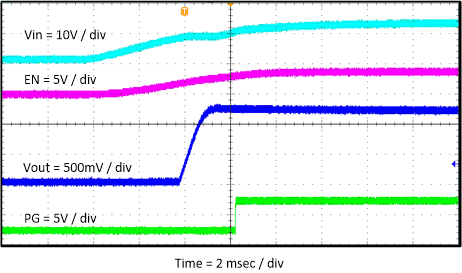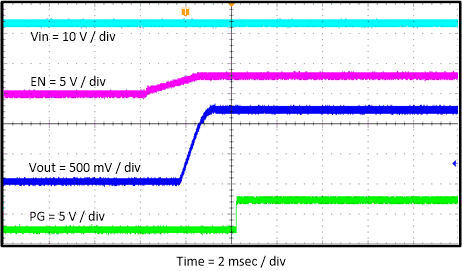SLVUBJ0B January 2019 – June 2021 TPS56C230
4.9 Start-Up
Figure 4-13 and Figure 4-14 show the start-up waveforms for the TPS56C230EVM. In Figure 4-13, the output voltage ramps up as soon as the input voltage reaches the UVLO threshold. In Figure 4-14, the input voltage is initially applied and the output is inhibited by using a jumper at J5 to tie EN to GND. When the jumper is removed, EN is released. When the EN voltage reaches the enable-threshold voltage, the start-up sequence begins and the output voltage ramps up to the externally set value of 1.2 V. The input voltage for these plots is 12 V and the load is 1 Ω.
 Figure 4-13 TPS56C230EVM Start-Up Relative to VIN
Figure 4-13 TPS56C230EVM Start-Up Relative to VIN Figure 4-14 TPS56C230EVM Start-Up Relative to Enable
Figure 4-14 TPS56C230EVM Start-Up Relative to Enable